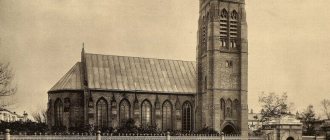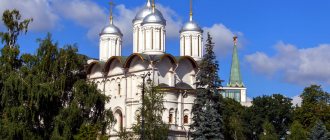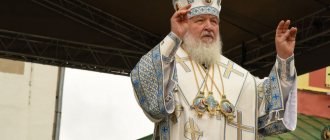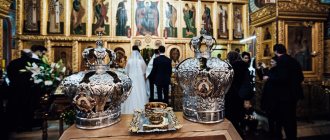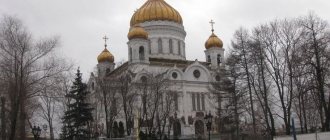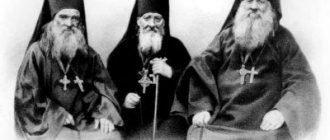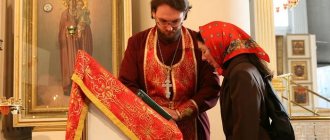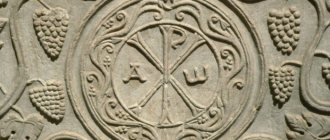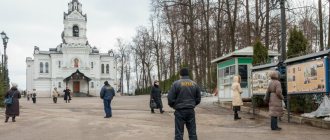Several centuries before the start of protest movements in Europe, reformist sentiments were already stirring the minds of the inhabitants of the British Isles. The doctrine of the Roman Church in the Middle Ages was not only the implementation of spiritual dictate over the population of Europe. The Vatican actively interfered in the secular life of sovereign states: cardinals and bishops took part in the political games of monarchical dynasties, and excessive taxes in favor of the papal treasury caused discontent among the nobility and ordinary people. To implement the interests of Rome, foreign clergy were appointed to parishes, far from sympathetic to the moral needs of local believers.
The development of the feudal economy required a revision of the relations between secular power and the Church. Along with socio-political and economic preconditions, doctrinal problems arose. The cry grew louder that the Catholic faith had deviated from the apostolic traditions. All this led to the formation of a new spiritual community in the British Isles in the 16th century - the Anglican Church.
Basic Doctrine of the Anglican Church
Priesthood and clergy are not identical concepts. One of the most important issues of all Christian denominations is the dogma of the church hierarchy. According to the canons, a shepherd is elevated to the priesthood not by human whim, but by the Holy Spirit through the special sacrament of ordination. For thousands of years, the continuity of each clergyman has been preserved, dating back to the Day of the Descent of the Holy Spirit on the Apostles. Many Protestant denominations have rejected the need for their pastors to be priests.
The Anglican Church, unlike other reform movements, has maintained the continuity of the hierarchy. When elevated to sacred degrees through episcopal ordination, a sacrament is performed with the prayerful invocation of the Holy Spirit. At the Church Council in 1563, at the insistence of Queen Elizabeth I, a symbolic book of the Anglican faith was approved, consisting of 39 articles. It eloquently shows what the characteristics of the Anglican Church are. The doctrinal doctrine of Anglicanism is a syncretism of Catholicism and the Protestant views of Lutheranism and Calvinism. Thirty-nine theses are formulated quite broadly and vaguely, allowing for many interpretations.
Britain zealously preserves its reformist beginnings. The Canons require clerics to publicly profess their fidelity to these Articles. The British monarch, taking the oath at the coronation, focuses his oath precisely on Protestant dogmas. The text of the sacred oath contains a denial of the belief that during the liturgy the transformation of bread and wine into the true Body and Blood of Christ occurs. Thus, the very essence of Christianity is not accepted: the Savior’s sacrifice in the name of all who believe in Him. Worship of the Virgin Mary and saints is also rejected.
The Anglican Church combines features of Catholicism and Protestantism
The English Church occupies a special niche in Christianity. Anglicanism is a symbiosis of two movements:
- Catholicism;
- Protestantism (Calvinism and Lutheranism).
As a Christian movement, the Anglican Church takes the Bible as its source of dogma. And the main canons of Anglicanism are set out in two texts:
- "Book of Common Prayer";
- "Thirty-nine articles."
Both sources have contradictions with each other, since the second of them strongly gravitates towards the Protestant movement. Also, the Thirty-Nine Articles practically do not touch upon biblical texts.
Holy Scripture is the authority for the Church of England.
With Christian tradition in Anglicanism, things are somewhat more complicated. The English Church unconditionally accepts the following authorities:
- legends up to the 5th century;
- resolutions of the first Ecumenical Councils.
Everything else should not contradict the Bible. If this criterion is violated, the tradition is rejected.
Of the Articles of Faith recognized by Anglicanism:
- Apostolic;
- Afanasiev;
- Nikeo-Tsaregradsky.
Everything else, from the point of view of the English Church, is not supported by Holy Scripture, and therefore cannot be considered reliable.
As the heir to Catholicism, the English Church adheres to the Western concept of the Trinity. The Holy Spirit in this tradition can come not only from God the Father, but also from the Son.
Anglicans believe that salvation is independent of good works. The only thing that matters is faith. The rest, including good deeds, are its consequences.
See also the article What kind of faith do Armenians have?
The English Church views the sacrifice of Christ as an event predetermined at the Creation of the world.
The sacrifice of Jesus Christ, according to Anglicans, was predestined from the creation of the world
Unlike, for example, the Orthodox tradition, Anglicanism has no idea of the earthly Church with a capital C - the body of Christ.
For Anglicans, a church is only a building, a temple where believers gather for prayers, sermons and worship. If in the text the Church is written with a capital letter, then this is about heavenly.
The Anglican tradition generally takes a very pragmatic view of the Christian religion and tries to differentiate as much as possible between the earthly and the heavenly.
In the same Ecumenical Councils, it is not at all necessary, according to the Anglicans, that the Holy Spirit should participate. They are quite a mundane event.
The position of the church in Anglicanism has been reduced as much as possible. It is conditioned and limited by the text of the Bible. If the Holy Scriptures do not say something, then the church does not have the authority to introduce these things into Christian dogma.
Lord's Supper
a sacrament recognized by the Church of England. Blessing of bread and wine and their use
Of the sacraments, the English Church recognizes only two:
- Baptism;
- Lord's Supper (Eucharist).
That is, for example, there is no sacrament of confession in this movement. And the reason is that there are no episodes in the Holy Scriptures that can be correlated with these sacraments.
Since in biblical history there are no prerequisites for marriage, consecration of oil, etc. - this means that believers do not need to organize anything like that.
The English Church recognizes infant baptism.
And the Eucharist has both traditional elements for Orthodoxy:
- body of Christ;
- blood of Christ.
But it is stipulated that the sacrament must be completed in the right mood: with dignity, with faith, righteously. Otherwise there will be no result for the person. The sacrament will not reveal its spiritual content and will remain only an external form, behind which there is nothing.
At the same time, Anglicans view the Eucharist to some extent from a symbolic side. At the very least, they reject the idea that the atoning sacrifice is repeated.
The Anglican Church holds the view that the Savior’s sacrifice was made once - on the cross. The Eucharist is a reminder, a symbol, an image, but in no way a spiritual equivalent of that event.
The image of the Mother of God is significantly reduced when compared with Orthodox Christianity. There are no prayers for her in worship.
Initially, the Anglican Church categorically rejected the veneration of such things as
- power;
- icons;
- statues.
But over time, these views softened. Individual saints are recognized by Anglicanism, and icons are acceptable in churches. The Anglican Church is rather inert in terms of innovation.
The work “The Thirty-Nine Articles” contains many outdated provisions that have nothing in common with modern realities. For example, attention is paid to the clearly irrelevant issue of indulgences.
In 1922, Anglican activists tried to develop theological tools for their movement and clarify the important directions of its activities. The idea failed because the clergy did not accept the proposals.
The Anglican Church does not clarify its doctrines and relies on outdated documents.
Today the Anglican Church continues on the same course and is guided by streamlined doctrines.
But, if on paper everything looks frozen, then in practice one can notice the development of theological thought and the developing trends in Anglican doctrine.
Another question is how coherent the initiatives and ideas of the various innovators of Anglicanism are.
Anglican dogmas
Anti-Roman movements in Christian society in the British Isles did not lead to such radical consequences as on the mainland. The basic canonical norms bear the stamp of the political and economic aspirations of the nobility of the 16th century. The most important achievement is that the Anglican Church is not subject to the Vatican. Its head is not a clergyman, but a king. Anglicanism does not recognize the institution of monasticism and allows for the salvation of the soul through personal faith, without the help of the Church. At one time, this greatly helped support the treasury of King Henry VIII. Parishes and monasteries were stripped of their property and abolished.
The meaning of Anglicanism.
From the very beginning, the Anglicans set as their goal the unification of all followers of Christ on earth. Archbishop Cranmer developed a grandiose plan for the cooperation of all the churches that had gone through the Reformation; his attempts were unsuccessful due to the lack of interest in him on the part of some German church leaders. Anglican churchmen are holding discussions for closer union with various leaders of a wide range of churches, including the Roman Catholic Church. Some of these interviews led to positive results. The Anglican churches entered into full Eucharistic communion with the Old Catholic Churches and the Polish National Catholic Church; many of the Anglican churches maintain partial eucharistic communion with the churches of Sweden and Finland; partial intercommunion with the Syrian Church of Mar Thoma in South India. The American Church has established special friendly relations with the Independent Church of the Philippines. Four American dioceses joined the new united Church of South India; this church is not in full eucharistic communion with any of the Anglican ecclesiastical provinces, but over time contacts between them become increasingly closer. Anglican communities in Burma and Sri Lanka have entered into negotiations with other churches, which could lead to the creation of united churches in these countries.
Anglicans play a leading role in the ecumenical movement for the unity and renewal of the universal church. The first president of the provisional committee of the World Council of Churches was Dr. W. Temple, Archbishop of Canterbury. The initiative to create the Movement for Faith and Church Order was taken by Bishop Charles Brent of the Philippines (later Bishop of Western New York. All independent Anglican ecclesiastical provinces are members of the World Council of Churches. Many of them are holding discussions about the possibility of closer union with other churches .
see also
REFORMATION; PROTESTANTISM; OXFORD MOVEMENT; CAMBRIDGE PLATONISTS; NONCONFORMISTS; SEPARATISTS.
Three churches
There are three kinds of internal currents in Anglicanism. The so-called "low church" zealously observes the gains of the Reformation. “High” tends to restore some attributes of Catholicism: veneration of the Virgin Mary and saints, the use of sacred images. Adherents of this movement are called Anglo-Catholics. Both of these formations are united within one community of the “broad church”.
Comparison
The Church of England remained the national church, albeit a fairly large one. According to various sources, the number of its adherents ranges from 25 to 85 million parishioners in different countries, although most of them, of course, live in Great Britain and its former colonies:
- Australia;
- New Zealand;
- USA;
- Nigeria;
- in some other states.
However, perhaps what matters here is “who thinks and how.” Due to the general decline in religiosity in Western Europe, churches are emptying, and many consider themselves adherents of any religion “out of habit” or “out of tradition.” But in any case, the Anglican Church remains one of the largest Protestant denominations.
True, in comparison with Catholics, the number of Anglican adherents looks very small. Today, the number of believers who recognize the Pope as their supreme shepherd is just under one billion two hundred million people. Catholicism, having gone through the Reformation and Counter-Reformation, cleared itself of the accusations of critics (at least partially, because most of the claims were fair) and managed to remain the largest religious denomination in the world. And this is perhaps the main difference between the Anglican and Catholic churches.
The Act of Supremacy turned the Church into a state structure
All religions of the world sooner or later face the need to delineate powers with secular power. Ancient Israel was a theocratic state. Byzantium realized the synergy of the Church and the power of the emperor. And in Britain, the society of believers has actually turned into one of the bodies of the state system. This is despite the fact that England is a secular state.
The British monarch has the right to appoint the primate of the Church and bishops. Candidates for ordination are presented for approval by the Prime Minister. The Archbishop of Canterbury has no administrative power outside England. Most of the episcopate are members of the House of Lords. Legally, the head of the Anglican Church is the reigning monarch, regardless of gender.
The Act of Supremacy gives the king full jurisdiction over the Church, giving him the right to control revenues and appoint clerics to church positions. In addition, the monarch has the right to decide dogmatic issues, inspect dioceses (dioceses), eradicate heretical teachings and even make changes to the liturgical rite. True, there have been no such precedents in the entire history of Anglicanism.
If the need arises for canonical changes, then the council of clergy does not have the right to do this on its own. Such events must undergo approval by government agencies. Thus, in 1927 and 1928, the British Parliament did not accept the new canonical collection proposed by the Council of Clergy to replace the Book of Public Prayer, which had lost its relevance, published in 1662.
Spread of Anglicanism.
Anglicanism was initially the state religion of England and Ireland (although the majority of the Irish population remained affiliated with the Roman Catholic Church). But it quickly began to spread throughout the world through colonization, since the colonists, of course, adhered to their familiar forms of Christian beliefs, and also through missionary work, which began with the founding of the Society for the Propagation of the Gospel (1701). The Anglican Church in England is national, it is protected and supported by the state, although the Anglican bishops and priesthood are not on state support. In all other countries, such a connection with the state has completely disappeared, and now not a single Anglican Church in them is connected in any way with the British Crown. In Scotland, Presbyterianism became dominant in 1689; the small Episcopal Church suffered persecution because of its allegiance to the exiled royal house of Stuart. But she managed to survive these difficult times, and at the end of the 18th century. The era of religious tolerance has arrived. Naturally, after the American Revolution, the Episcopal Church of America took shape as a free and independent association from the Church of England, although it did not proclaim as its goal the rejection of the foundations of its doctrine and liturgical traditions. In 1857, the Church of New Zealand became an independent diocese, which did not leave the commonwealth with the Church of England. In 1869, the Church of Ireland separated from the state and began to consider itself independent. This process continued until independent and self-governing Anglican churches were formed in almost every part of the world. To date, the distribution of archbishoprics (church provinces) of the Anglican Church by country and region is as follows: England (2), Scotland (1), Ireland (1), Wales (1), Canada (4), USA (9), West Indies (1), Africa (6), Sudan (1), Indian Ocean (1), Burma (1), Brazil (1), China (1), Japan (1), Australia (5), New Zealand (1) ; The diocese with jurisdiction over the Middle East is called the Council of the Episcopal Church of Jerusalem and the Middle East.
An ecclesiastical province can be formed from a minimum of four dioceses. It elects its own bishops, approves the canons of local church government, and has the right to revise the missal in accordance with local traditions. No ecclesiastical province can impose its rules on another, and everyone recognizes that significant changes in doctrine or church worship may entail the loss of ties with all others. Some dioceses, for example on the island of Mauritius, are not part of any ecclesiastical province and are subordinate to the church either in England or in the United States.
Structure of the Anglican Church
The Anglican faith spread throughout the world in parallel with British economic and political expansion. The total number of professing this faith, as of 2014, reaches 92 million people. Outside the British Isles, the community calls itself the Episcopal Church.
Today, Anglicanism is a community of local Churches that recognize their spiritual leader as the Archbishop of Canterbury. In this aspect there is some analogy with the Roman Church. Each of the national communities is independent and self-governing, just like in the Orthodox canonical tradition. The Anglicans have 38 Local Churches, or Provinces, which include more than 400 dioceses on all continents.
The Archbishop of Canterbury is not superior (canonically or mystically) to the other primates of the community, but he is the first in bestowing honors among his own kind. The difference between the Catholic Church and the Anglican Church is that the Pope is the supreme head of all Catholics, both spiritually and administratively. The existence of local national communities is not accepted by the Vatican.
To discuss issues of church life, the Anglican clergy periodically meets at conferences at Lambert Palace in London.
Nonconformists and Independents broke away from the Anglican Church
Other movements arose on the basis of the Anglican Church. Mostly these are supporters of cleansing the Anglican Church from traces of Catholicism. For example, the Puritans (nonconformists).
Their distinctive feature is their intention to get rid of the legacy of Catholics, mainly of an administrative nature. Today the Puritans are most concentrated in Scotland and are called: the Presbyterian Church.
The Independents are another movement that has already formed from among the Puritans. They completely lack any kind of church hierarchy.
Women's episcopate
The peculiarities of the Anglican Church are not limited to its legal status and doctrinal dogmas. The feminist movement began in the 60s of the last century. As decades passed, the struggle to end oppression in the social environment led not only to a change in the position of women in society, but also to deformations of the concept of God. Protestantism contributed a lot to this. In the religious views of the reformers, a pastor is, first of all, a social service. Gender differences cannot be a hindrance to this.
For the first time, the sacrament of ordaining a woman as a presbyter was performed in one of the Anglican communities of China in 1944. In the early 70s of the 20th century, the Episcopal Church in the USA officially approved the ordination of the fairer sex. Gradually, these trends reached the metropolis. Changes in such views of society objectively demonstrate what the features of the Anglican Church are in our time. In 1988, at a conference of bishops in London, a resolution was adopted on the possibility of introducing a female priesthood in the Anglican Church. This initiative was approved by Parliament.
After this, the number of priests and bishops in skirts began to grow by leaps and bounds. In a number of communities in the New World, there are more than 20 percent of women pastors. The first lady hierarch was ordained in Canada. Then Australia picked up the baton. And now the last bastion of British conservatism has collapsed. On November 20, 2013, the Synod of the Anglican Church overwhelmingly legalized the ordination of women as bishops. At the same time, the opinion of ordinary parishioners, who spoke out categorically against these innovations, was not taken into account.
Creed
Anglicanism is a mixture of different faiths: some were inherited from the Catholics, some from the ancient undivided Church, some have a distinct Protestant character. Unlike all other Protestants, the Anglicans, although they did not recognize the priesthood as a sacrament, still, until recently, retained the episcopal system and the apostolic succession of the hierarchy. This was destroyed only in the 20th century when they introduced the female priesthood. The Anglicans rejected indulgences and the doctrine of purgatory. They recognize the Holy Scripture as the only source of faith, but at the same time they accept three ancient symbols: Nicene-Constantinograd and two more that are known to us, but are not used liturgically - the so-called Athanasian symbol (Athanasius of Alexandria) and the so-called Apostolic symbol.
What remains from Catholicism in Anglicanism is the recognition of the procession of the Holy Spirit from the Father and the Son, but they do not have the same pathos as Catholics. According to tradition, they use filioque, but at the same time they do not insist on this teaching, considering it a private theological opinion. In addition, the very structure of the service was inherited from Catholicism. Anglican worship is largely derived from Catholic worship. The Eucharistic service, of course, resembles the Mass, although it is celebrated in English.
The recognition of only two sacraments passed from Protestants to Anglicans - Baptism and the Eucharist. But Anglicans are not as radical as Lutherans or Calvinists. In their liturgical practice, marriage, priesthood, confirmation, and unction were retained, but they do not call them sacraments, using the terms “sacred rite” or “sacred rite.” They are sometimes called "lesser sacraments." In the doctrine of the Eucharist, transubstantiation is rejected, but the presence of the Body and Blood of Christ is recognized. The sacrificial nature of the Eucharistic service is rejected, prayers to saints, veneration of relics and icons are rejected. However, they do this too less radically.
In the Anglican church you can see stained glass windows and images of saints, including those close to our icons [2].
In the books published by Anglicans, there are many such narratives that we would call “lives of the saints.” They do not pray to saints as intercessors before God, but honoring their memory, turning to their lives, to their deeds is very common. Not worshiping icons in the sense of paying honor to a prototype through an image, they widely use religious painting. During Anglican worship, instrumental music is used: an organ or even an orchestra.
The head of the Anglican Church in England used to be the king and now parliament. To this day, all changes in religious doctrine and worship must be approved by parliament. This is paradoxical, because the modern English parliament includes not only Anglicans, but also people of other faiths and simply non-believers. But this obvious anachronism exists only in England itself. Anglicans, scattered throughout other countries of the world, can change their system as they wish, without consulting the secular authorities. There are now about 90 million Anglicans in the world. Outside the UK they call themselves the Episcopal Church. The main regions of the spread of Anglicanism are primarily North America, Australia, New Zealand, Africa (those countries that were colonies of England). The highest body for all Anglicans is the so-called Lambeth Conference. Anglican bishops from all over the world come to these conferences every five years at Lambeth Palace (the palace of the Bishop of London). They can make decisions on doctrinal order or other issues of the entire Anglican Communion.
In 1988, at one of these conferences, a resolution was adopted on the possibility of a female episcopate in the Anglican Church. There are already women bishops in a number of North American countries. The first woman bishop was ordained in Canada, and there is a woman bishop in Australia. There are already quite large numbers of elders in both England and America. In their church magazines you can read an advertisement: “the community is looking for an elder.” And if earlier there could be a theological dialogue between Orthodox and Anglicans, the goal of which was unification with the Anglican Church, now, after they introduced the female priesthood and female bishopric, this, of course, is impossible. In England itself there are no women bishops, but this is only a matter of time [3]. Conservatives, in the best sense of the word, are trying in every possible way to delay the implementation of this innovation, delaying the preparation of the relevant papers and their passage through parliamentary committees and commissions. Some bishops even threatened that they would go over to the Catholics or the Orthodox, but none of them took such a step.
Some communities broke away from the main body of Anglicans. In the 16th century, a movement arose that called itself nonconformists, that is, disagreers or puritans (from the word purus - pure). These are those who did not agree to accept even the slightest elements of Catholicism. They wanted a purely Protestant structure and refused to recognize the royal supremacy of the church and bishops. As a result, these nonconformists, or Puritans, formed their own community, which is called the Presbyterian Church (from the word “presbyter”). They have no bishops, only presbyters, and elected ones. There are still Presbyterians today, they are widespread mainly in Scotland. An even more extreme movement broke away from them - the Independents, or independents. They also rejected the elders, proclaiming the complete independence of each community not only in matters of governance, but also in matters of faith. Everyone believes in whatever they want. When they gather together on Sunday in their church building, everyone can say what they want. Touring preachers and even non-believers can speak there, and anyone who wishes can share their thoughts on issues of faith or life. There are Independents in England, but there are more of them in the USA, where they are very suitable for the very spirit of society...
A woman priest is nonsense
Since the creation of the world, religious rites have always been performed by men. All doctrines profess the immutability of the fact that a woman, according to the Creator's plan, must submit to a man. It was to men, and even then not to all, but only to a select few, that the secrets of the universe were communicated and the curtain of the future was lifted. The religions of the world do not know examples of a woman being a mediator between God and people. This provision is especially important for the Christian revealed religion. The priest represents Christ during the service. In many denominations, except Catholic, the appearance of the shepherd must correspond to this. The Savior was a man. The transcendental image of God is masculine.
There have been many women in history who have accomplished significant feats to preach Christianity. After the execution of the Savior, when even the most devoted apostles fled, women stood at the cross. Mary Magdalene was the first to know about the resurrection of Jesus. Righteous Nina alone preached the faith in the Caucasus. Women carried out educational missions or were involved in charity, but never performed divine services. A representative of the fairer sex cannot perform service due to her physiological characteristics.
Henry VIII - leader of the dissenter
Christian theologians have such a term. Revolutionary sentiments in the church environment mature very often and for various reasons: the general ignorance of the believing masses, political conflicts... Seditious thoughts are called temptation. But here is one who decides to cross the Rubicon and express common aspirations in real affairs. In Britain, King Henry VIII did this. It was under this monarch that the history of the Anglican Church began.
The Church of England, born of a political rupture, a royal schism, today threatens the death of society by disintegration: still alive in Africa, where it retains a certain doctrinal and liturgical strength, it is in deep crisis in England and the United States, in the intellectual and moral collapse of the world , to which he filed.
Anglicanism is considered originally to be the national religion of England, hence its name. The head of the Church of England is the King or Queen of England, advisor to the Archbishop of Canterbury. Elizabeth confirms her general Protestant character by remaining vague on the imposed articles of faith, Christian truths that are usually acceptable to unwary Catholics and Lutherans, slightly perverting the definitions.
The reason was Henry's desire to divorce his first wife, Catherine of Aragon, and marry Anne Boleyn. Church divorce is a sensitive matter. But the hierarchs always met the nobles halfway. Catherine was a relative of Charles V. In order not to spoil relations with the German emperor, Pope Clement VII refused the English monarch.
Because of this deliberate vagueness, multiple interpretations of Anglicanism have proliferated from the very beginning, with theologians of the Church of England faced with definitions of their religion that go from Rome or almost to Geneva, Augsburg. Moreover, the most committed Protestants would regularly break up over the centuries with Anglican authorities suspected of being crypto-Catholics.
The Catholic Church has seriously examined, on at least two occasions, the thorny question of the validity of ordinations enshrined in the Church of England. Likewise, the vast majority of Orthodox churches do not recognize these ordinations; it is true that they also doubt Catholics for many.
Henry decides to break ties with the Vatican. He rejected the canonical supremacy of Rome over the Church of England, and Parliament wholeheartedly supported its monarch. In 1532, the king appointed Thomas Cranmer as the new Archbishop of Canterbury. Previously, bishops were sent from Rome. By agreement, Cranmer releases the king from the marriage. The following year, Parliament passed the “Act of Supremacy,” which proclaimed Henry and his successors on the throne as the supreme head of the Church in England. This is how the separation of the English parishes from the Vatican took place. In the second half of the 16th century - during the reign of Mary Tudor, a devout Catholic - the Catholic and Anglican Churches formally united for a short time.
The deep crisis of the Anglican Church in the West
Now he has several tens of millions of nominal faithful, from 70 to 80 million.
In principle, Anglicanism will thus be one of the main Christian denominations, in terms of the theoretical number of believers. However, it is divided into several schisms that have been worsening over the past twenty years. And on its British and American historical grounds, the process of collapse appears to be well underway. Among the first Christian communities in the world, they appoint priestesses, then bishops, “women bishops.” They have abandoned any condemnation of contraception or homosexuality, including when it publicly affects members of its clergy. The problem for the Church of England, even from a purely human point of view, is that it is a benevolent institution that no longer condemns anything - except euthanasia, anyway - even quicker to flee the faithful than speeches more traditional. Temples are empty, jewelry is being sold at auction, this is a crisis.
Failed unification
Although, according to its dogmatic views, the Anglican Church is closer to Protestantism than to Orthodoxy, nevertheless, over the centuries, attempts have been made to unite both communities of believers. Anglicans profess dogmas that are in complete agreement with Orthodoxy: for example, about the One God in Three Persons, about the Son of God, and others. Anglican priests, like Orthodox ones, can be married, unlike Catholic ones.
In the 19th-20th centuries, the Russian Orthodox Church discussed the issue of recognizing the Anglican clergy on the basis of recognition of apostolic succession in the sacrament of ordination. In recent decades, Russian hierarchs have taken constant part in the Lambertian conferences. There was an active theological dialogue, the goal of which was unification with the Anglican Church.
However, the peculiarities of the Anglican Church, associated with the introduction of female presbytery and episcopacy, make further communication impossible.
Community of Anglican Churches.
The Anglican churches have formed a vast fellowship of churches throughout the world. Today all the bishops in Japan are Japanese, and all the bishops in China are Chinese. Four African bishops head dioceses in Nigeria, and there are also twelve African auxiliary bishops. The Bishop of Jamaica is a Negro from the West Indies. In 1958, the first Filipino was consecrated to the rank of suffragan bishop. This process is ongoing; Once churches in Asia and Africa achieve independence, they tend to create ecclesiastical associations that differ quite significantly from European and American models.
The unity of such a vast association helps maintain friendly relations. Anglican churches have neither a pope nor a Vatican. They are not held together by any generally accepted law. But they feel their unity, sharing a common faith, adhering to a similar tradition of worship, and changes are made to it based on the revision of the missal in different church provinces. With the permission of the local bishop, an Anglican priest can officiate in any part of the Anglican world. Every ten years (or so) this friendly relationship is reaffirmed at the Lambeth Conference of Anglican Bishops, gathering from around the world. The first conference took place in 1867, during a troubled time for the church. Its meetings take place at Lambeth Palace, the London residence of the Archbishop of Canterbury, who is ex officio (ex officio) their chairman and sends out invitations on his own behalf. The conference is not a synod; it cannot make any decisions binding on all churches. But it does provide an opportunity for mutual consultation and frank discussion. Its reports and resolutions enjoy great authority, and many of its decisions are accepted for implementation by various churches. Today, changes are taking place in the forms of organization; permanent committees on interchurch relations within the Anglican churches and on missionary activities have been established. Amid growing ecumenical sentiment, the Anglican Church and the Roman Catholic Church established a joint committee on theology in 1967 to take the first steps towards restoring full unity between the two faiths.
Four and a half centuries of the English community in Moscow
In 1553, Richard Chancellor, after an unsuccessful attempt to reach India through the Arctic seas, ended up in Moscow. At an audience with Ivan the Terrible, he achieved an agreement on concessions to English merchants regarding trade in Muscovy. It was at his request that the first Anglican church was opened in Moscow.
Three years later, Chancellor visited Rus' again. The chambers of the English court were built on Varvarka. Despite the fact that he, along with Ambassador Osip Nepeya, died on the way back to England, the beginning of trade relations with Foggy Albion was laid.
Since the time of Ivan the Terrible, the Anglican Church in Moscow has been the center of British life in the capital. Almost no information has been preserved about how the spiritual life of the Anglicans was built in troubled times and throughout the 17th century. At the end of the 18th century. immigrants from Britain used the Protestant church in the German settlement for worship. After the fire of 1812, the British rented part of Princess Prozorovskaya's mansion on Tverskaya Street. And sixteen years later they purchased a house on Chernyshevsky Lane, where, after some alterations, a small chapel was built. At the end of the century, the Anglican Church of St. Andrey.
Everything changed with the beginning of the 20th century. After the October Revolution, the Anglican presbyter was expelled from the country, and the spiritual life of the community in Moscow came to an end. The revival began only in the late eighties. In 1992, the Anglican religious organization was officially registered in Russia. The chaplain of the Moscow parish provides spiritual care for communities in St. Petersburg, the Far East and Transcaucasia. Canonically, the Anglican societies of Russia are part of the Diocese of Gibraltar in Europe.
Story
The beginning of the Reformation in England is associated with the name of King Henry VIII (1509-1547).
He came from the Tudor dynasty. In his younger years he was a sincere, ardent supporter of papism. A theological treatise against Luther was signed with his name. The then pope even awarded him the title of “The most faithful child of the Apostolic See.” However, this “faithful child,” although theologically, perhaps, really gravitated towards what Rome teaches, was also guided in his actions by personal motives. Henry VIII was divorced and remarried twice. The first time he divorced was to marry the Spanish Catherine of Aragon, daughter of Emperor Charles V. The Roman See compromised for the good of the Catholic Church, and Henry was allowed to do so, despite the fact that she was the widow of Henry VIII's brother (and therefore was considered his relative). When Henry wished to dissolve this marriage and marry Anne Boleyn, the queen's maid of honor, he turned to the pope with a request to recognize his union with Catherine of Aragon as invalid. But Pope Clement VII did not agree - he had his own obligations to the Spanish crown. Henry, however, was a decisive man and, in order to achieve his goals in this case, considered it possible to ignore the opinion of the pope and make the same request to the English Catholic bishops. Primate (that is, the first bishop) of England Thomas Cranmer (In the old books they write Thomas Cranmer) did what the pope refused to do: he allowed Henry VIII to divorce and married him to Anne Boleyn. This happened in 1532. Cranmer, unlike Henry, was a man of some theological convictions. In the same 1532, the Synod of Bishops of England decided to recognize the English Church as independent of the pope.
In 1534, the English Parliament declared King Henry VIII the Supreme Head of the English Church. No changes were made to the doctrine itself at that time.
In 1534, according to a special act, the church was subordinated to the king, he broke off relations with the Vatican and became the head of the church. The monastery lands were confiscated in favor of the treasury, which enriched the king and made it possible for large courtiers to obtain new land holdings.
After the death of Henry VIII, ten-year-old Edward VI ascended the throne. He was king of England from 1547 to 1553. At this time, Archbishop Thomas Cranmer was able to implement those of his theological ideas that he was forced to conceal under Henry VIII. The so-called “Book of Common Prayer” was published, which defined the liturgical structure of the reformed church. According to this book, which is still the doctrinal book of Anglicanism, commemoration of the dead and services to saints were abolished and only two sacraments were recognized: Baptism and the Eucharist.
In 1553, the so-called 42 members of the creed were published. They were also compiled by Thomas Cranmer. They contain the teaching about the Church and salvation in the spirit of Protestantism (and with the determining influence of Calvinism). The persecution of Catholics began. More than two hundred clergy were executed during this period. Some of them are now canonized by the Catholic Church as martyrs. The Anglicans already seemed to be celebrating a complete victory over Catholicism, but something happened that no one expected. Young Edward VI died, and the daughter of Catherine of Aragon, Mary Tudor, who is known in history as Mary the Catholic or as Bloody Mary, ascended the throne. She was Queen of England from 1553 to 1558. Under her, everything turned back - the English church was again subordinated to the pope, and the persecution of opponents of papism began. Now they began to execute and burn the leaders of the renovation. Cranmer, along with two other bishops who supported him, were sent to prison. All three were sentenced to be burned. However, Catholics really wanted Cranmer to repent and renounce his beliefs. They forced him to do this as best they could: firstly, physically, and secondly, they kept him in prison for a long time, and before his eyes they burned first one bishop who was in prison with him, and a few months later another. At some point, Cranmer lost heart and asked for mercy. But when he was given the condition that he publicly renounce his beliefs, Cranmer showed firmness and was also burned in 1556. In London, near Trafalgard Square, there is a monument to the first three Anglican bishops burned under Mary the Catholic.
But this was the last surge of Catholicism in England. With the death of Mary, after a short period of interregnum, her sister Elizabeth Tudor (1558 - 1603) ascended the throne. During her reign, Anglicanism was restored. They found three bishops who renewed the Anglican hierarchy, ordaining Matthew Parker (in our pronunciation - Matthew) as Archbishop of Canterbury in 1559. From him comes the succession of modern Anglican bishops. The Archbishop of Canterbury is still considered the head of the Anglican hierarchy.
Under Matthew Parker, the 42 members of the faith were revised and reduced to 39. These 39 members still make up the Anglican Creed [1].
Anglican Church of St. Andrew the First-Called
In the seventies of the 19th century, the Anglican community in Moscow grew significantly. The old chapel in Chernyshevsky Lane was not able to accommodate all the parishioners. In 1882, according to the design of architect Richard Freeman, construction of a new temple began. The architect created the architectural appearance of the red brick building in the English Gothic style of the Victorian era. In plan, the temple is a single-nave basilica with an altar apse on the eastern side. A high tower with four small archers at the corners was built above the vestibule.
Since most of the parishioners who donated for the construction were from Scotland, the temple was consecrated in honor of the patron saint of this part of Britain - St. Apostle Andrew the First-Called. Divine services began in 1885.
During the Soviet years, the Anglican Church of St. Andreya shared the fate of many churches in Russia. After the liquidation of the parish, the premises became a warehouse, then a dormitory. In 1960, the building was transferred to the famous Melodiya recording studio. For many years, one of the technical services was located here.
In 1991, St. Andrew's Anglican Church reopened its doors to parishioners. A priest from Finland came to conduct services. Two years later, a rector was appointed, and in 1994 the building was transferred to the English community.
Holy Primates of the English Church
| Canterbury Cathedral |
In 1997, England celebrated the 1400th anniversary of the baptism of the English people - in 597, which began the 450-year period when the English Church was in canonical communion with the Orthodox East, with which it professed a common Orthodox faith.
Throughout this period, the main spiritual center of England was the city of Canterbury - English Constantinople, or, if you prefer, English Kyiv - the birthplace and capital of the English Church. The most significant figures of that time were, of course, the 35 Orthodox archbishops of Canterbury, 22 of whom are venerated as saints. The veneration of some of them is national, others – local. Two-thirds of the Orthodox primates of the English Church lived holy lives, and this is remarkable, especially considering that in the period after the great schism, only three Catholic archbishops of Canterbury were canonized, living shortly after the schism - in the 11th-13th centuries. Who were the 22 archbishops, whom, based on their holy lives, we can respectfully call “patriarchs of the English Church”? Saint Augustine
– 1st Archbishop of Canterbury and Apostle of the Angles (597 – ca. 604). The most complete description of the missionary labors of St. Augustine can be found in the Venerable Bede the Venerable in his Ecclesiastical History of the People of the Angles.
| A page from the Gospel belonging to St. Augustine. Con. VI century |
He was sent to England from Sicily or perhaps from southern Italy by the holy Pope Gregory the Dialogue, who is also called the Apostle of the English. During the short seven-year period of his ministry in England, St. Augustine managed to establish the Church among the English and convert the kingdom of Kent to Christianity. Particles of the saint’s relics have been preserved, as well as his personal Gospel[1]. An Orthodox service has been compiled for St. Augustine in English[2]. His memorial day is May 26, old style.
| Peter Murphy. Saint Lawrence |
Saint Lawrence
- 2nd Archbishop of Canterbury (c. 604 - 619). He was also from Italy, possibly from Rome. Saint Lawrence continued the work begun by Saint Augustine to organize the English Church, in which he was miraculously helped by the Apostle Peter - evidence of this is given by the Venerable Bede. This is not the only example of the holy apostle’s care for England: according to legend, Peter himself preached in Britain conquered by the Romans.
The tomb of St. Lawrence has survived to this day; it was last opened at the beginning of the last century. His memorial day is February 3.
Saint Mellitus
– 3rd Archbishop of Canterbury (619–624). A Roman, although bearing a Greek name, he was prior to his arrival in England abbot of the monastery of St. Andrew on the Caelian Hill in Rome. Saint Mellitus came to England in 601. In 604, St. Augustine ordained him as the first Bishop of London. A church was immediately built in London in the name of the Apostle Paul, who, according to legend, also preached in this city. This church was later rebuilt more than once, but it still stands on the very spot where the holy apostle once preached, and is now called “St. Paul’s Cathedral.”
After some time, Saint Mellitus was expelled from the country because he refused to give communion to the unbaptized (who, by the way, called communion “white bread”). But later the saint returned and until the end of his days he served in Canterbury, where, like St. Augustine, he worked miracles. His memorial day is April 24.
| Statue of Saint Justus in Rochester Cathedral |
Saint Justus
– 4th Archbishop of Canterbury (624–627). He came from Italy with Saint Mellitus, and in 604 became the first bishop of Rochester. In 624 he succeeded Saint Millitus at the See of Canterbury. Like other holy primates, Saint Justus was buried in the monastery founded by Saint Augustine in Canterbury. His memorial day is November 10.
Saint Honorius (Honorius)
– 5th Archbishop of Canterbury (627–653). He came to England in 601 and was ordained in Lincoln. He significantly strengthened the Roman mission on English soil and elevated it to the national level. Saint Honorius supported the missionaries: the Celt Saint Aidan, who preached in the north, in Northumbria; the Burgundian Saint Felix - in East Anglia; a native of Lombardy, Saint Birinus, in Wessex (Kingdom of the West Saxons) and the Frank, Saint Agilbert, who later became Bishop of Paris, in the same Wessex. The beginning of the formation of a united English Church dates back to the time of Saint Honorius; under him, a sense of national identity and national unity began to grow in the country. His memorial day is September 30.
Saint Deusdedit (also Adeodate)
– 6th Archbishop of Canterbury (655–664). There is no doubt that Saint Deusdedit, the first English primate of the English Church, was prepared for his ministry by Saint Honorius, who did so much for the organization of the national Church in England. The saint took the name Deusdedit, which means “dedicated to God”; in the world he was called Friton. Saint Deusdedit founded monasteries in Peterborough (Cambridgeshire) and on the Isle of Thanet (Kent), and also consecrated Damian Bishop of Rochester. The relics of Saint Deusdedit, placed in a shrine, were venerated until the Reformation, when they were destroyed. His memorial day is July 14.
| Saint Theodore |
Saint Theodore
- 7th Archbishop of Canterbury (668–690). Certainly one of the most significant English saints. Saint Theodore was from Tarsus, the hometown of the Apostle Paul. A true monk, a very educated man, at the age of 65 he quickly passed through all the degrees of the priesthood. Despite his advanced age, he was very active and traveled all over England more than once. In Canterbury he established a seminary where Greek was taught at a high level; he ordained bishops, founded dioceses, and most importantly, reconciled and united representatives of Celtic and Roman Orthodoxy in the British Isles. Largely thanks to him, the conversion of the English to Christianity was completed and they gained experience so that, together with Irish missionaries, they could preach the Gospel to the pagans in northwestern Europe, bringing tens of thousands of souls to Christ. Saint Theodore convened Local Councils of the English Church, thanks to him it withstood the heresy of monophilitism. His relics were incorruptible, and this became a symbol of the “golden age” of holiness in the English Church, which, by the grace of God, was greatly facilitated by the works of the saint himself. An Orthodox service has been compiled for Saint Theodore in English[3]. His memory is celebrated on September 19.
Saint Britvald
– 9th Archbishop of Canterbury (693–731). He studied in Canterbury and later became a monk. He was exceptionally knowledgeable in the Holy Scriptures, church and monastic sciences. From 676 St Britwald was abbot of the monastery at Reculver in Kent, and before that he was probably abbot of Glastonbury. He was consecrated bishop in Lyon, in Gaul. Saint Britvald continued the initiatives of Saint Theodore; under him, Sherborne and other dioceses were opened, Christianity spread in the last pagan kingdom of England - Sussex (Kingdom of the South Saxons). He corresponded with such great saints of his time as St. Aldhelm of Sherborne, Hieromartyr Boniface of Germany and St. Wilfrid of York. His memorial day is January 9.
Saint Tatwin
– 10th Archbishop of Canterbury (731–734). Before his consecration as archbishop, Saint Tatwin labored in the monastery of Breedon (now the town of Breedon-on-the-Hill), Leicestershire, and was famous for his high spiritual life and education. He was especially respected by the Venerable Bede the Venerable. The written works of Saint Tatvin are known, for example “Grammar”. His memorial day is July 30.
Saint Nothelm
– 11th Archbishop of Canterbury (735–739). As a learned priest of the diocese of London, Saint Nothhelm assisted his friend the Reverend Bede in compiling the Ecclesiastical History of the English People. He corresponded with the Apostle of the German lands, Saint Boniface, who was from England; some letters from their correspondence have survived. The service of Saint Nothelm in the rank of high priest, like the service of his predecessor Saint Tatwin, was short-lived, but fruitful. Like Saint Tatwine, Saint Nothelm was venerated in Canterbury. His memorial day is October 17.
Saint Cuthbert
– 12th Archbishop of Canterbury (c. 740 – 761). He labored at Lyminge Monastery in Kent and was consecrated Bishop of Hereford in 736. After becoming Archbishop of Canterbury, Saint Cuthbert provided significant support to English missions to Europe. His memorial day is October 26.
Saint Bregwyn
– 13th Archbishop of Canterbury (761–764). Saint Bregwin was of Germanic origin. He came to England to study at the seminary founded by St. Theodore of Canterbury. He had close connections with holy missionaries in Germany. His letters addressed to Saint Lull of Mainz[4] have survived. Like Saint Cuthbert, Saint Bregwyn was buried in Canterbury Cathedral, where he was venerated. Memory – August 24.
Saint Janbert
– 14th Archbishop of Canterbury (765–792). Originally from Kent, St Ianbert trained as a monk at St Augustine's in Canterbury, where he later became abbot. As the primate of the English Church, he courageously opposed King Offa of Mercia (757–796): a powerful ruler who, like Charlemagne, called himself “emperor,” sought to bring the English Church under his control. The memory of Saint Janbert is August 12.
| Saint Ethelhard |
Saint Ethelhard (Æthelgard)
– 15th Archbishop of Canterbury (793–805). He was rector of the monastery in Louth, Lincolnshire. Saint Ethelhard, while Archbishop of Canterbury, suffered much from the rivalry between the Mercians, ruled by King Offa, and the inhabitants of Kent. At the Council of the English Church in 803, Saint Ethelhard decreed that every newly consecrated bishop must confess the Orthodox faith in writing before his consecration. His veneration in Canterbury continued until the Norman Conquest in the second half of the 11th century, a period when the Normans tried to stop the veneration of many ancient English saints. The memory of Saint Etelhard is celebrated on May 12.
Saint Plegmund
– 20th Archbishop of Canterbury (890 – 914 or 923). Ordained Archbishop of Canterbury at the end of the tragic 9th century, when pagan Vikings destroyed monasticism in England and brought education into decline, Saint Plegmund was one of the restorers of the ancient English Church. At first he led a hermit's life on an island in Cheshire, where he was from. This islet was later named after Saint Plegmund Plegmundstow (today it is called Plemstall), which means "place of Plegmund's hermitage." The piety and learning of Saint Plegmund was appreciated by the blessed king Alfred the Great, who saved the country from the pagan invasion and sought to revive it spiritually. Saint Plegmund was Alfred's mentor and advisor. The saint was famous for his learning, and took part in the translation into Old English of the work of St. Gregory Dvoeslov “On Pastoral Care” and other works. In 901, he crowned Edward the Elder king of Wessex, in 908 he founded a new monastery in the capital of the kingdom, Winchester, and worked hard to revive the Church. One day Saint Plegmund ordained seven bishops at once for the old and new dioceses. Largely thanks to his works, the English Church in the 10th century came to a new “golden age” of its holiness. An Orthodox service has been compiled for the saint in English[5]. His memorial day is August 2.
Saint Athelm (Athelm)
– 21st Archbishop of Canterbury (914 or 923 – ca. 927). Saint Athelm continued the work of Saint Plegmund to restore the Church and church life in England. He was originally from the western part of England, and for some time asceticised at Glastonbury, where he became rector. Around 909, Saint Athelm became the first bishop of the city of Wells, near Bristol in Somerset. The saint was the paternal uncle of Saint Dunstan of Canterbury and had a certain influence on him in childhood and invited him to Canterbury. Saint Athelm was also an advisor and assistant to the future King Æthelstan, grandson of Alfred the Great, who became one of the greatest English kings of the 10th century. Saint Athelm's feast day is January 8th.
Saint Ode (also Odo, Odon) the Beneficent, or the Good
, also known as Oda the Stern, 23rd Archbishop of Canterbury (942–958). Saint Oda was born in East Anglia around 870 and was of Danish origin. He became a skillful and reliable adviser to King Athelstan, who rid the country of pagan invaders, and his successors, including Edmund and Edgar. Saint Aude took monasticism in France, in the famous monastery on the island of Fleury. Before taking up the See of Canterbury, Saint Ode was Bishop of Ramsbury in Wiltshire. Under his influence, Saint Dunstan reformed English monasticism. Saint Ode's nephew Saint Oswald became the great bishop of York. Saint Ode prepared the way for the reform of monasteries and the restoration of monastic life in England. The saint especially loved and revered Saint Wilfrid of York, and under him the relics of Saint Wilfrid were transferred from Ripon to Canterbury. Saint Oda was nicknamed the Beneficent for his tireless efforts to revive the Church and his tireless pastoral activities. The saint was an exemplary archbishop, a caring shepherd, and was revered for the miracles he performed. He is the author of several written church regulations and decrees. His memorial day is June 2.
| Saint Dunstan |
Saint Dunstan
- 26th Archbishop of Canterbury (960–988). St. Dunstan ruled the English Church during perhaps the greatest period of its history, called the “second golden age.” The English Church owes much of this to him. Saint Dunstan was born in 909 at Baltonsborough near Glastonbury and was from a noble family related to the royal house. He was educated in the ancient and holy monastery of Glastonbury, after which he moved to Canterbury, and then lived for some time at the court of King Athelstan, but was expelled from there by people who slandered him out of envy of his talents. Saint Alphege, Bishop of Winchester, ordained Saint Dunstan a priest, and Dunstan moved to Glastonbury, where he lived as a hermit, practicing handicrafts. At the age of 30, the saint became abbot of Glastonbury Monastery, which marked the beginning of a revival of monastic life throughout England. To restore the Church after the Danish invasions, Saint Dunstan had to overcome the resistance of wealthy barons who did not want to give up their power, wealth and lands for the sake of the Church. At the age of 46, Saint Dunstan had to leave for Flanders, but soon Saint Edgar the Peaceful, the first king of all England, called him back. In 957, Saint Dunstan became Bishop of Worcester, in 959 - Bishop of London, and in 960 - Archbishop of Canterbury. He himself personally reorganized monastic life in six monasteries and saved many other monasteries from the barons, asking for help from the royal house. This was a period of a kind of symphony between the Church and the English state. The saint insisted that everyone observe fasting. He restored churches, revived monasticism, and compiled the coronation rite according to the Byzantine model, which has not changed significantly since then. St. Dunstan educated the holy king Edward the Martyr, who was killed for being a patron of monasteries. The saint encouraged the veneration of this martyr among the saints in the country. Saint Dunstan was a seer; he predicted all the troubles that befell England after the murder of Saint Edward, including the Norman conquest. The saint worked miracles. He was very fond of the Canterbury saints, especially St. Oda. After the death of Saint Dunstan, he was revered throughout the country. An Orthodox service was written for Saint Dunstan[6]. His memorial day is May 19.
Saint Ælfric
– 29th Archbishop of Canterbury (995–1005). Saint Ælfric came from a noble family in the kingdom of Kent. Before becoming an archbishop, Saint Ælfric was abbot of the monastery of Saint Alban in Abingdon, Oxfordshire, later (from 976) hegumen of the monastery in Malmesbury, Wiltshire, and bishop of Wilton (from 990), also in Wiltshire. He was famous for his holy life and education. Having become primate, he skillfully managed the Church at a critical time for it and rallied Kent during the Danish invasion there. He reposed in Abingdon. After the death of Saint Ælfric, he immediately began to be venerated in Canterbury. He should not be confused with the abbot and spiritual writer Ælfric of Eynsham, who lived at the same time. Saint Ælfric's feast day is November 16th.
| Hieromartyr Alfej |
Hieromartyr Alphege
- 30th Archbishop of Canterbury (1005–1012). First he led a monastic life in Deerhurst Monastery in Gloucestershire, and then a hermit's life in Somerset. Saint Alphege later became Bishop of Bath. In 984, when Saint Alphege was 31 years old, he became Bishop of Winchester, where he gained universal love for his generous alms and holy life. In 1011, the Danes, who besieged and captured the city of Canterbury, captured the holy Archbishop Alphege. They demanded a huge ransom for him, but Saint Alphege did not give them a ransom for himself and forbade others to do so. Enraged, drunken Danes killed Saint Alphege at Greenwich. Alphege was buried in London's St. Paul's Cathedral. He was loved and revered as a saint of God and a national hero. In 1023, the holy relics of Alphege were transferred to Canterbury, where their veneration continued and where they subsequently remained incorrupt. Hieromartyr Alphege is the only Orthodox Archbishop of Canterbury to receive the crown of martyrdom. An Orthodox service was compiled for him[7]. His memory is celebrated on April 19.
Saint Ethelnot (also Ednot)
– 32nd Archbishop of Canterbury (1020–1038). He was related to the royal house of Wessex. Saint Aethlenoth was baptized by Saint Dunstan of Canterbury and predicted his future archbishopric. Interestingly, Saint Aethelnot is the seventh graduate of Glastonbury Monastery to become Archbishop of Canterbury. He was the chief advisor to King Cnut the Great. The saint, also known as Ethelnoth the Good, was revered for his wisdom and was considered a saint during his lifetime. He was the initiator of the discovery and transfer of the relics of Saint Alphege. His memorial day is October 30.
Saint Edsig (also Edsin)
– 33rd Archbishop of Canterbury (1038 – ca. 1050). The last Orthodox Archbishop of Canterbury before the Norman invasion and the great schism of 1054, Saint Edsig crowned Edward the Confessor on the throne, thereby restoring the English royal dynasty. The saint was a great patriot. It is believed that he voluntarily retired shortly before his death. His memory is celebrated on October 28.
May this list of holy primates inspire us all. Let us note that many of them were hermits, true monks and even national leaders, although not all of them were native Englishmen. And it would be nice for us Englishmen to add the following prayer to our daily prayer rule: “The holy primates Augustine, Lawrence, Mellitus, Justus, Honorius, Deusdedit, Theodore, Britwald, Tatvin, Nothelm, Cuthbert, Bregwin, Janbert, Ethelhard, Plegmund, Athelm, Oda, Dunstan, Aelfric, Alphege, Ethelonoth and Edsig - pray to God for the salvation of the English land and the English people!
Table
| Anglican Church | Catholic Church | |
| Time of occurrence | 1534 | 1054 (if we take the split of Christianity into Western and Eastern as the starting point) |
| Number of parishioners | According to various sources – from 25 to 85 million people | About 1 billion 200 million people |
| Theological features | There is no celibacy (celibacy of priests), as well as the dogma of the infallibility of the Pope. | There is celibacy, the Pope is considered infallible in matters of doctrine, there are other differences from Anglicanism |
